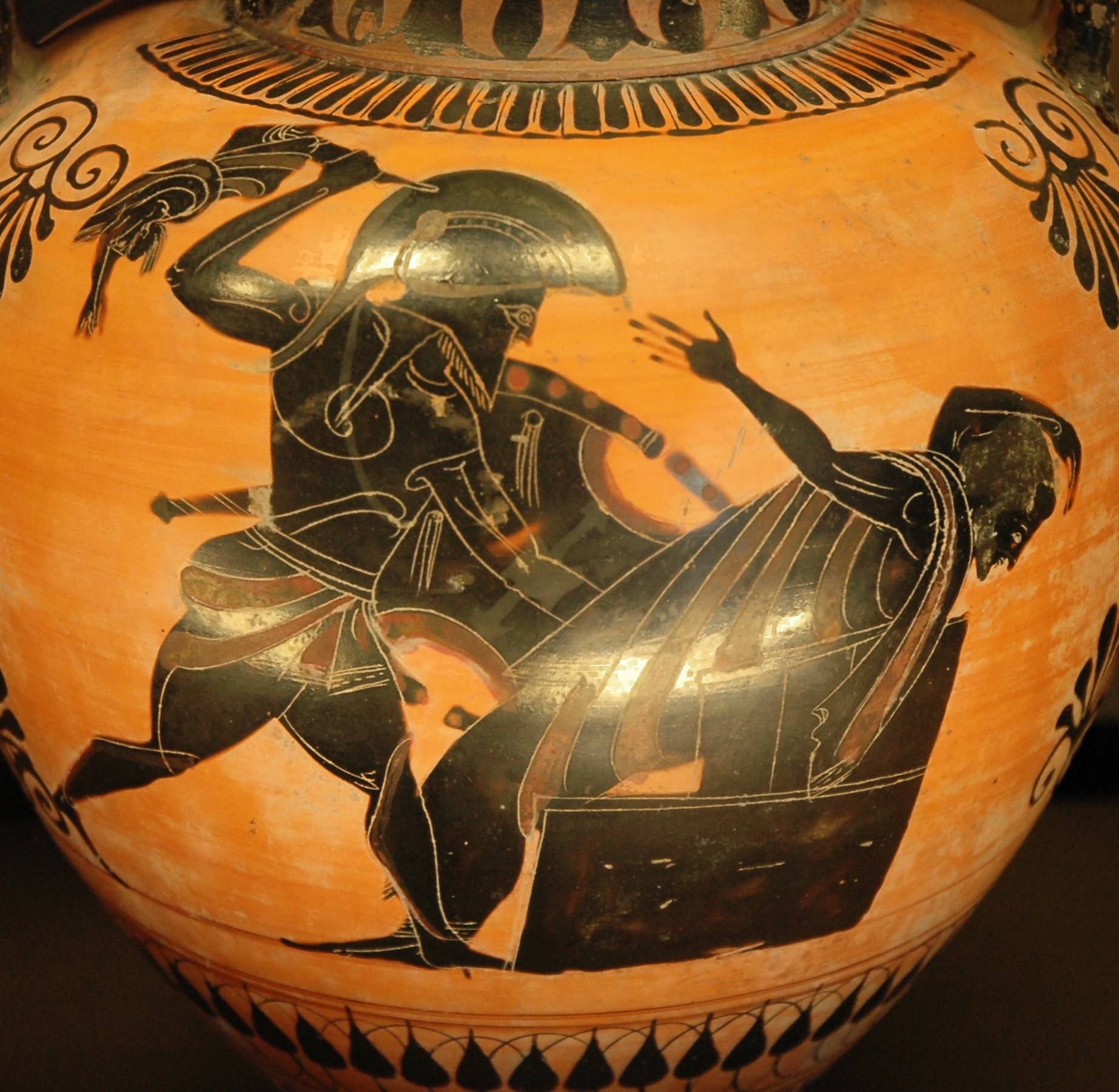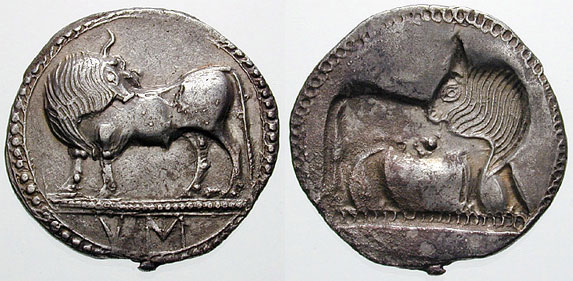|
Aethilla
In Greek mythology, Aethilla or Aethylla (Ancient Greek: Αἴθιλλα or Αἴθυλλα) was Trojan princess as a daughter of King Laomedon and sister of Priam, Lampus, Hicetaon, Clytius, Hesione, Cilla, Astyoche, Proclia, Medesicaste and Clytodora.Dionysius of Halicarnassus, ''Antiquitates Romanae'1.62.2/ref> Mythology After the fall of Troy Aethilla became the prisoner of Protesilaus, who took her, together with other captives, with him on his voyage home. He landed in Thrace in order to take in fresh water. While Protesilaus had gone inland, Aethilla persuaded her fellow prisoners to set fire to the ships. As a result of this being done, the Greeks were forced to remain on the spot and founded the town of Scione. According to other authors, the event took place in Italy; in commemoration of it, the nearby river received the name Nauaethus ("of the burning ships"), while Aethilla, Astyoche, and Medesicaste were surnamed the ''Nauprestidai'' ("they who set fire to ships" ... [...More Info...] [...Related Items...] OR: [Wikipedia] [Google] [Baidu] |
Laomedon
In Greek mythology, Laomedon (; grc, Λαομέδων means "ruler of the people") was a Trojan king, son of Ilus and thus nephew of Ganymede and Assaracus. Family Laomedon's mother was variously identified as Eurydice,Apollodorus3.12.2/ref> Leucippe or Batia. Thus, his possible siblings are Themiste, Telecleia and sometimes, even Tithonus. He was the father of Priam, Lampus, Hicetaon, Clytius, Hesione, Cilla, Astyoche, Proclia, Aethilla, Medesicaste and Clytodora.Apollodorus and Hyginus p. 63; Dionysius of Halicarnassus, ''Antiquitates Romanae'1.62.2/ref> Tithonus is also described by most sources as Laomedon's eldest legitimate son, and most sources omit Ganymede from the list of Laomedon's children, but indicate him as his uncle instead. Laomedon's possible wives are Placia, Strymo (or Rhoeo), Zeuxippe or Leucippe;Apollodorus and Hyginus p. 63 by the former he begot Tithonus and by the latter King Priam (see John Tzetzes' ''Scholia in Lycophronem'' 18 : "Priamu ... [...More Info...] [...Related Items...] OR: [Wikipedia] [Google] [Baidu] |
Protesilaus
In Greek mythology, Protesilaus (; Ancient Greek: Πρωτεσίλᾱος ''Prōtesilāos'') was a hero in the ''Iliad'' who was venerated at cult sites in Thessaly and Thrace. Protesilaus was the son of Iphiclus, a "lord of many sheep"; as grandson of the eponymous Phylacos, he was the leader of the Phylaceans. Hyginus surmised that he was originally known as Iolaus—not to be confused with Iolaus, the nephew of Heracles—but was referred to as "Protesilaus" after being the first (, ''protos'') to leap ashore at Troy, and thus the first to die in the war.Hyginus. ''Fabulae'', 103. Description In the account of Dares the Phrygian, Protesilaus was illustrated as ". . .fair-skinned, and dignified. He was swift, self-confident, even rash." Mythology Protesilaus was one of the suitors of Helen. He brought forty black ships with him to Troy, drawing his men from "flowering" Pyrasus, coastal Antron and Pteleus, "deep in grass", in addition to his native Phylace. Protesilaus wa ... [...More Info...] [...Related Items...] OR: [Wikipedia] [Google] [Baidu] |
Clytodora
Clytodora (Ancient Greek: Κλυτοδώρα) is a name in Greek mythology that may refer to: *Clytodora, a Troy, Trojan princess as the daughter of Laomedon, probably either by Placia, Strymo (mythology), Strymo (or Rhoeo), Leucippe or Zeuxippe. Clytodora was the (half) sister of Priam, Astyoche, Lampus, Hicetaon, Clytius, Cilla (mythology), Cilla, Proclia, Aethilla, Medesicaste, and Hesione. She became the queen of Dardanians (Trojan), Dardania when she married Assaracus and became the mother of Capys of Dardania, Capys.Dionysius of Halicarnassus, ''Antiquitates Romanae'1.62.2/ref> In some accounts, the wife of Assaracus was called Hieromneme, the naiad daughter of Simoeis, Simoes.Apollodorus3.12.2/ref> *Clytodora, possible spouse of Minyas (mythology), Minyas and mother of Clymene (mythology), Clymene (Periclymene), Orchomenus (mythology), Orchomenus, Presbon, Athamas,Scholia on Apollonius of Rhodes, Apollonius Rhodius, 1.230 Diochthondas and Eteoclymene.Scholia ad Pindar, ''Pythi ... [...More Info...] [...Related Items...] OR: [Wikipedia] [Google] [Baidu] |
Astyoche
The name Astyoche (; Ancient Greek: Ἀστυόχη means 'possessor of the city') or Astyocheia was attributed to the following individuals in Greek mythology: *Astyoche, naiad daughter of the river god Simoeis, mother of Tros by Erichthonius. *Astyoche, a Trojan princess as the daughter of King Laomedon by Strymo, Placia or Leucippe, sister of Priam, wife of Telephus and mother of Eurypylus (some call her daughter of Priam and wife of Eurypylus). She was bribed by Priam with a gold vine to persuade Eurypylus to go to the Trojan War, which resulted in him being killed in the battle (cf. the story of Eriphyle). Together with Aethilla and Medesicaste, she was taken captive after the sack of Troy and set fire to the Greek ships during their stay on the Italian coast. *Astyoche, a Minyan princess as the daughter of King Actor of Orchomenus, son of Azeus. She was the mother of Ascalaphus and Ialmenus with Ares. The latter lay with her in secret when the maiden entered into her upper ... [...More Info...] [...Related Items...] OR: [Wikipedia] [Google] [Baidu] |
Scione
Scione or Skione ( grc, Σκιώνη) was an ancient Greek city in Pallene, the westernmost headland of Chalcidice, on the southern coast east of the modern town of Nea Skioni. Scione was founded by settlers from Achaea; the Scionaeans claimed their ancestors settled the place when their ships were blown there by the storm that caught the Achaeans on their way back from Troy. It "was situated on one summit of a two-crested hill and on the slopes toward the sea... The hill with the fortifications and the pottery fragments constituted the acropolis of ancient Scione and the hill beyond was that on which the defenders encamped 'before the city.'" It was a member of the Delian League. Its moment of historical importance came during the Peloponnesian War, when just after the truce between Sparta and Athens in early 423 BCE, Scione revolted against Athens and was encouraged by the Spartan general Brasidas with promises of support. The Athenians sent a fleet to retake Mende and ... [...More Info...] [...Related Items...] OR: [Wikipedia] [Google] [Baidu] |
Priam
In Greek mythology, Priam (; grc-gre, Πρίαμος, ) was the legendary and last king of Troy during the Trojan War. He was the son of Laomedon. His many children included notable characters such as Hector, Paris, and Cassandra. Etymology Most scholars take the etymology of the name from the Luwian 𒉺𒊑𒀀𒈬𒀀 (Pa-ri-a-mu-a-, or “exceptionally courageous”), attested as the name of a man from Zazlippa, in Kizzuwatna. A similar form is attested transcribed in Greek as ''Paramoas'' near Kaisareia in Cappadocia. Some have identified Priam with the historical figure of Piyama-Radu, a warlord active in the vicinity of Wilusa. However, this identification is disputed, and is highly unlikely, given that he was known in Hittite records as being an ally of the Ahhiyawa against Wilusa. A popular folk etymology derives the name from the Greek verb , meaning 'to buy'. This in turn gives rise to a story of Priam's sister Hesione ransoming his freedom, with a golden veil that A ... [...More Info...] [...Related Items...] OR: [Wikipedia] [Google] [Baidu] |
Medesicaste
In Greek mythology, the name Medesicaste ( grc, Μηδεσικάστη) refers to two women of the Trojan royal house: * Medesicaste, a daughter of Laomedon and thus a sister of Priam. Together with her sisters Aethilla and Astyoche, she was taken captive by the Greeks after the end of the Trojan War; the three sisters set fire to the Greek ships, causing the crew to remain and settle at the place they were staying at (either Italy or Thrace). * Medesicaste, an illegitimate daughter of Priam and wife of Imbrius.Homer, ''Iliad'' 13.173; Apollodorus, 3.12.5; Pausanias, 10.25.9 See also * for Jovian asteroid 4715 Medesicaste Notes References * Apollodorus, ''The Library'' with an English Translation by Sir James George Frazer, F.B.A., F.R.S. in 2 Volumes, Cambridge, MA, Harvard University Press; London, William Heinemann Ltd. 1921. ISBN 0-674-99135-4Online version at the Perseus Digital Library. [...More Info...] [...Related Items...] OR: [Wikipedia] [Google] [Baidu] |
Conon (mythographer)
Conon ( grc-gre, Κόνων, ''gen''.: Κόνωνος) was a Greek grammarian and mythographer of the age of Augustus (who lived 63 BC – 14 AD), the author of a work titled (Narrations), addressed to Archelaus Philopator, king of Cappadocia. It was a collection of fifty narratives relating to the mythical and heroic period, and especially the foundation of colonies. An epitome of the work was preserved in the '' Bibliotheca'' of Photius, the 9th-century patriarch of Constantinople. Photius commends Conon's Attic style, and remarks that Nicolaus Damascenus borrowed much from him. There are separate editions of this abstract by Gale, by Teucher, and Kanne. Dion ChrysostomOr. xviii. torn. i. p. 480. mentions a rhetorician of this name, who may possibly be identical. Notes Sources Conon, Fifty NarrationsEnglish translation by Brady Kiesling * External links English translation of the Narrationsby John Brady Kiesling John Brady Kiesling is a former U.S. diplomat and th ... [...More Info...] [...Related Items...] OR: [Wikipedia] [Google] [Baidu] |
Stephanus Of Byzantium
Stephanus or Stephan of Byzantium ( la, Stephanus Byzantinus; grc-gre, Στέφανος Βυζάντιος, ''Stéphanos Byzántios''; centuryAD), was a Byzantine grammarian and the author of an important geographical dictionary entitled ''Ethnica'' (). Only meagre fragments of the dictionary survive, but the epitome is extant, compiled by one Hermolaus, not otherwise identified. Life Nothing is known about the life of Stephanus, except that he was a Greek grammarian who was active in Constantinople, and lived after the time of Arcadius and Honorius, and before that of Justinian II. Later writers provide no information about him, but they do note that the work was later reduced to an epitome by a certain Hermolaus, who dedicated his epitome to Justinian; whether the first or second emperor of that name is meant is disputed, but it seems probable that Stephanus flourished in Byzantium in the earlier part of the sixth century AD, under Justinian I. The ''Ethnica'' Even as an ... [...More Info...] [...Related Items...] OR: [Wikipedia] [Google] [Baidu] |
John Tzetzes
John Tzetzes ( grc-gre, Ἰωάννης Τζέτζης, Iōánnēs Tzétzēs; c. 1110, Constantinople – 1180, Constantinople) was a Byzantine poet and grammarian who is known to have lived at Constantinople in the 12th century. He was able to preserve much valuable information from ancient Greek literature and scholarship. Biography Tzetzes described himself as pure Greek on his father's side and part Iberian (Georgian) on his mother's side. In his works, Tzetzes states that his grandmother was a relative of the Georgian Bagratid princess Maria of Alania who came to Constantinople with her and later became the second wife of the ''sebastos'' Constantine Keroularios, ''megas droungarios'' and nephew of the patriarch Michael Keroularios. He worked as a secretary to a provincial governor for a time and later began to earn a living by teaching and writing. He was described as vain, seems to have resented any attempt at rivalry, and violently attacked his fellow grammarians. Owin ... [...More Info...] [...Related Items...] OR: [Wikipedia] [Google] [Baidu] |
Sybaris
Sybaris ( grc, Σύβαρις; it, Sibari) was an important city of Magna Graecia. It was situated in modern Calabria, in southern Italy, between two rivers, the Crathis (Crati) and the Sybaris (Coscile). The city was founded in 720 BC by Achaeans (tribe), Achaean and Troezenian settlers. Sybaris amassed great wealth thanks to its fertile land and busy port. Its inhabitants became famous among the Greeks for their hedonism, feasts, and excesses, to the extent that "sybarite" and "sybaritic" have become bywords for opulence, luxury, and outrageous pleasure-seeking. In 510/509 BC the city was subjugated by its neighbor Crotone, Kroton and its population driven out. Sybaris became a dependent ally of Kroton, but Kroton again besieged the city in 476/475 BC, probably resulting in another victory for Kroton. Two attempts to reoccupy the city failed around 452/451 BC and 446/445 BC when the remaining Sybarites were again expelled by the Krotoniates. After a ... [...More Info...] [...Related Items...] OR: [Wikipedia] [Google] [Baidu] |






